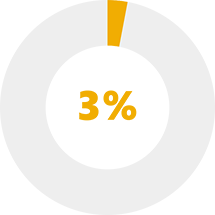Prescription pain relievers such as oxycodone and hydrocodone may be prescribed for teenagers following sports injuries, broken bones and dental procedures such as removing wisdom teeth.
Teens may be prescribed a stimulant such as Adderall, Ritalin or Vyvanse to treat symptoms of attention-deficit hyperactivity disorder (ADHD), including inattention, impulsivity and hyperactivity.
Teens may receive prescriptions for benzodiazepines such as alprazolam, lorazepam and diazepam to treat anxiety and sleep disorders.

3.7% of Kansas teens report misusing prescription drugs, including opioids, stimulants and benzodiazepines.

Of teens reporting prescription drug misuse, 74% report getting access to those drugs from friends and family (through sharing, buying or stealing).
Never share prescription drugs with friends or family, even if they ask to try your medication. It is against the law to share controlled substance medications such as opioids and stimulants with anyone.
Avoid carrying prescription drugs with you unless you need to keep a medication schedule. Keep your medications at home, preferably locked in a cabinet.
Only take prescription drugs according to your healthcare provider's recommendation. The longer you take a prescription drug, the higher your risk for developing addiction.
Never crush pills to take in any other form unless instructed by your healthcare provider.
Using multiple substances at an early age can increase a teen's risk for developing a substance use disorder as well as endanger their physical and mental health.
Using alcohol and opioids together can slow breathing substantially since both work as depressants. This significantly increases the risk for accidental overdose.
Stimulants can mask the effect of alcohol and cause more alcohol consumption than normal. Mixing stimulants and alcohol combines “uppers” and downers” and increases the likelihood of alcohol poisoning, accidents and death.
One of the most dangerous combinations of prescription drugs involves opioids and benzodiazepines. "Benzos" are a class of drugs used to treat anxiety and sleeping disorders and include Xanax and Valium.
Opioids and benzodiazepines both work as depressants on the body's central nervous system. Together, they can substantially slow breathing and increase the risk for overdose and death.
Opioid overdose can occur suddenly or over the course of a few hours. It can happen during the first use of a prescription or illegal opioid, or after long-term use.
In Kansas, more than 20 prescription opioid overdose deaths have been recorded among ages 15-24 from 2016 to 2019.
Meanwhile, non-fatal opioid overdoses (prescription and illicit opioids) reported in emergency rooms in Kansas have increased 13% among ages 11-24 over the same time frame.
Source: KDHE